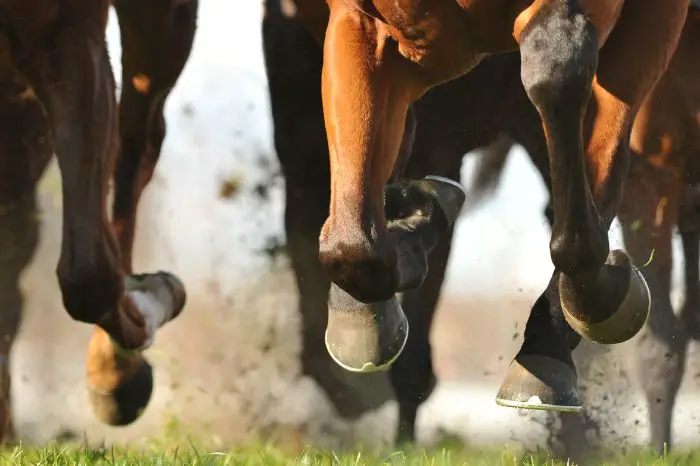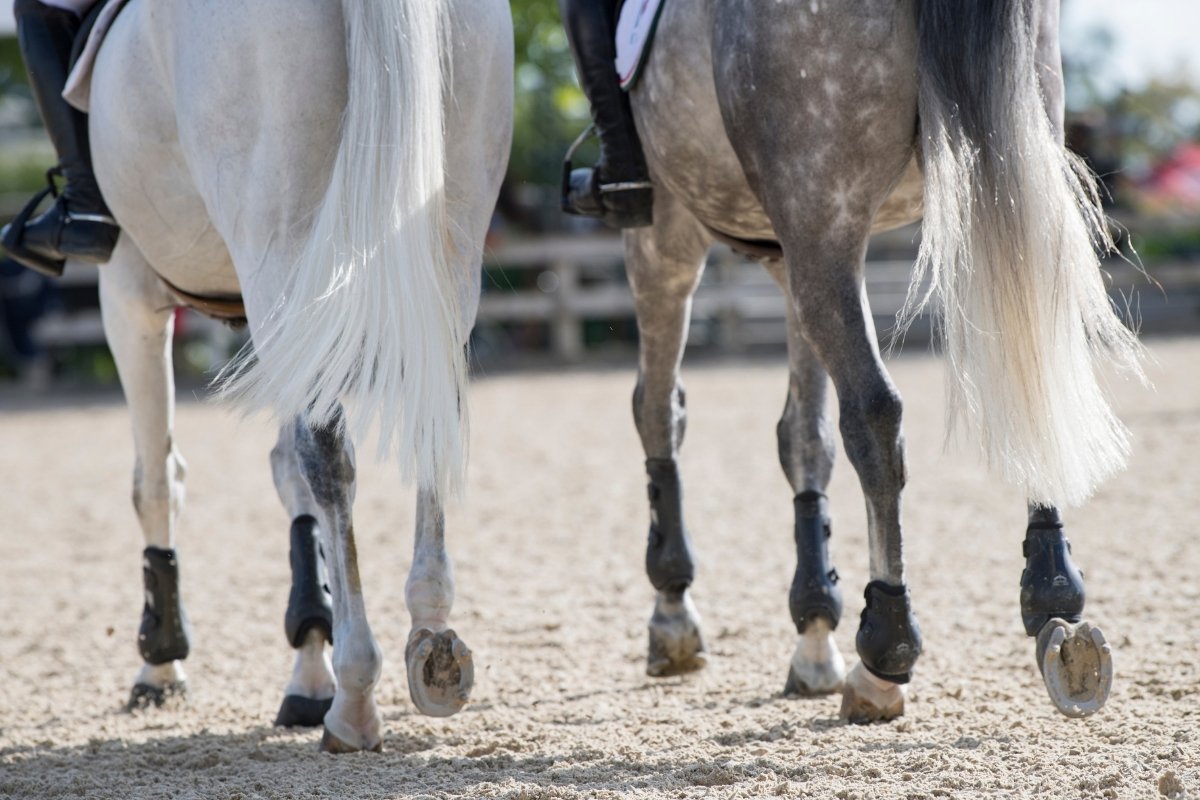Last Updated on September 10, 2022
As a horse owner or carer, it is important to be able to identify the main horse tendon injury symptoms. Tendon injuries in horses can be very problematic, particularly if not identified quickly. Let’s take a look at the main horse tendon injury symptoms and find out how these injuries are diagnosed and treated.
What Is A Horse Tendon Injury?
The tendons of a horse are incredibly strong cord-like structures that support the skeletal system. In the legs of the horse, tendons work in conjunction with muscles and ligaments to help extend and flex the legs. They also work as shock absorbers, and are under a continual level of strain, especially during high-impact exercise.
Horses can injure their tendons either through sudden movement or impact, or degenerative wear and tear. The tendon tissue itself consists of a thick cord of fibers that are tightly aligned. When the horse sustains a tendon injury, these fibers are torn or pulled apart, leaving a defect in the tissue.

Take Out Time to Also Read:
Horse Tendon Injury Symptoms
As a horse owner or carer, you should check your horses’ legs daily for any signs of tendon injury or other defects. Tendon injuries tend to have a very specific set of symptoms that are easy to recognize, although they can sometimes be confused with other limb problems.
The main horse tendon injury symptoms include localized swelling over the tendon, which may feel soft and fluid-filled. The tendon itself will feel thickened and you may be able to detect some heat. The horse may demonstrate pain if the tendon is gently palpated.
If a horse sustains a tendon injury, it may be lame, but this is not always the case. A horse with a very mild tendon injury may not show any sign of lameness. However, severe tendon injuries can be very painful and the horse may be reluctant to move.
Horse Tendon Injury Diagnosis
If you suspect that your horse has a tendon injury, it is important to seek veterinary advice as soon as possible. Your veterinarian will assess the clinical signs and level of lameness, which will help to judge the likelihood that the horse has sustained a tendon injury.
When a tendon injury is suspected, your veterinarian will carry out an ultrasound scan to assess the level of damage. This may not be carried out until at least a week after the initial injury, to allow the swelling to subside.
Ramard Total Tendon Repair, Horse Joint Ligament and Tendon Supplements for Elasticity and Strength
The ultrasound scan will show if there is any damage to the tendon tissue, and assess the extent of the damage. This will help to inform the treatment plan for the horse, as well as assess the prognosis and likelihood of a full return to fitness.
Read more about Deep Flexor Tendon Injury In Horses – Causes And Treatments Explained
Horse Tendon Injury Treatment
The problem with tendon injuries in horses is that the tendon fibers take a very long time to heal and repair. In fact, in some situations, tendon tissue can take even longer to heal than a skeletal fracture. Once a tendon is damaged it is highly susceptible to further injury, so strict rest and controlled exercise are vital.
In the initial phase following injury, your veterinarian will normally advise that your horse is kept on complete rest, normally confined to a stall or stable. The aim is to reduce pain and inflammation, and anti-inflammatory medication may be required. Cold hosing and careful bandaging can also help to reduce swelling of the tendon and surrounding tissues.
Once the inflammatory phase has ended, the horse will need a long period of controlled exercise to enable the tendon tissue to begin to repair. This normally consists of in-hand walking for short periods, gradually building up to faster work over a period of several months. At no point should the horse be permitted to run freely or subjected to high-impact exercise, as this will aggravate the injury and prolong the recuperation period.
Not all horses make a full recovery from a tendon injury, but the prognosis is greatly improved if treatment is initiated promptly and a controlled exercise plan is adhered to. Being able to recognize the main horse tendon injury symptoms means you can easily recognize when your horse has a tendon problem, enabling you to take prompt action.
Summary, Horse Tendon Injury Symptoms
So as we have learned, the main horse tendon injury symptoms include localized heat and swelling around the tendons which run down the back of the horse’s lower legs. This swelling may be painful when palpated in the horse and may resent having the affected area touched. Depending on the severity of the injury, the horse may be severely lame or may not show any signs of lameness at all.
We’d love to hear your thoughts on the most common horse tendon injury symptoms! Do you have a horse that suffers from recurrent tendon injury problems? Or maybe you’ve got some questions about the best way to treat a tendon injury in your horse? Leave a comment below and we will get back to you!
FAQ’s

Kate Chalmers is a qualified veterinary nurse who has specialized in horse care for the vast majority of her career. She has been around horses since she was a child, starting out riding ponies and helping out at the local stables before going on to college to study Horse Care & Management. She has backed and trained many horses during her lifetime and competed in various equestrian sports at different levels.
After Kate qualified as a veterinary nurse, she provided nursing care to the patients of a large equine veterinary hospital for many years. She then went on to teach horse care and veterinary nursing at one of the top colleges in the country. This has led to an in-depth knowledge of the care needs of horses and their various medical ailments, as well as a life-long passion for educating horse owners on how to provide the best possible care for their four-legged friends.
Kate Chalmers BSc (Hons) CVN, Dip AVN (Equine) Dip HE CVN EVN VN A1 PGCE


